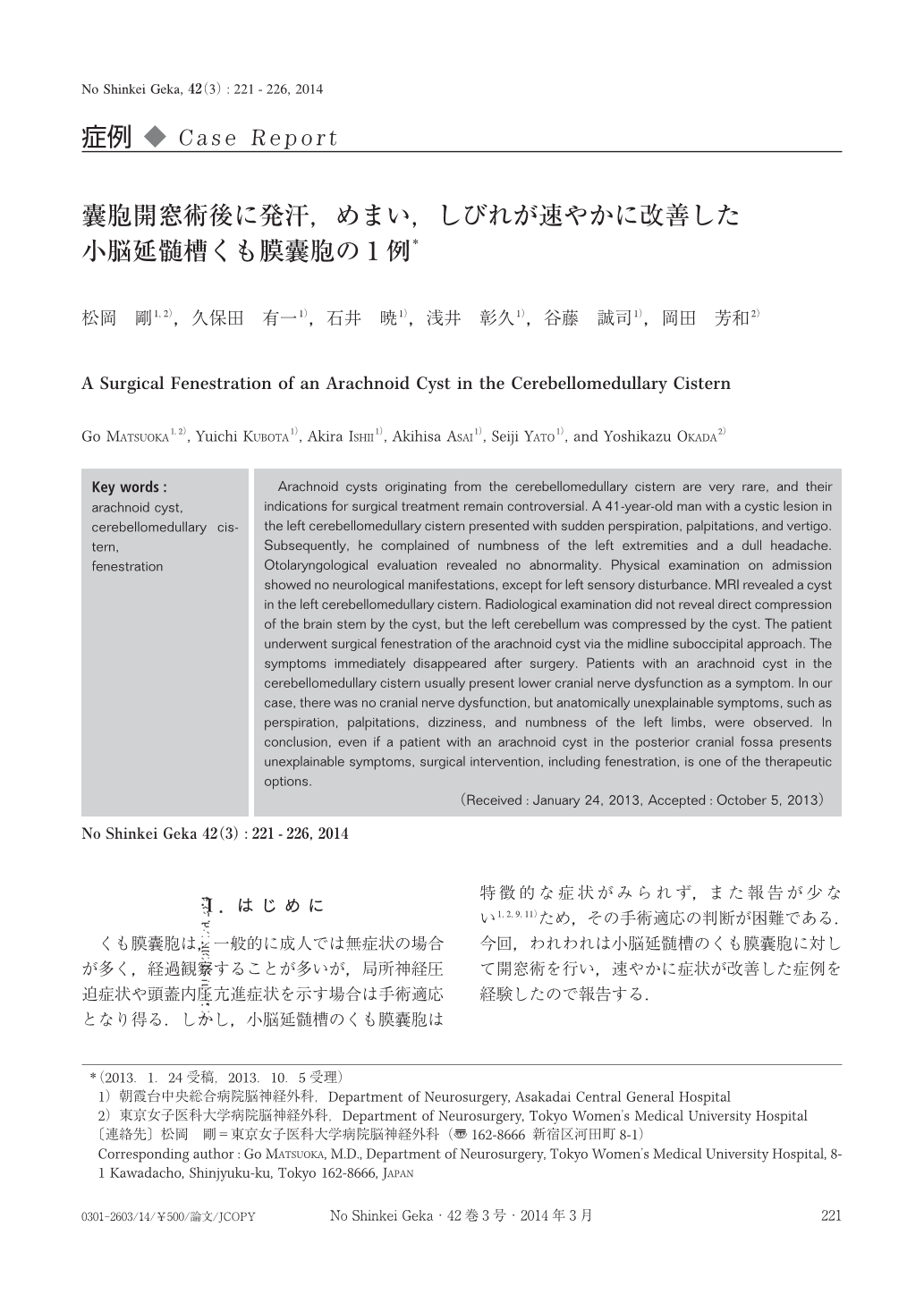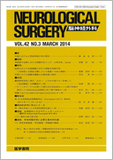Japanese
English
- 有料閲覧
- Abstract 文献概要
- 1ページ目 Look Inside
- 参考文献 Reference
Ⅰ.はじめに
くも膜囊胞は,一般的に成人では無症状の場合が多く,経過観察することが多いが,局所神経圧迫症状や頭蓋内圧亢進症状を示す場合は手術適応となり得る.しかし,小脳延髄槽のくも膜囊胞は特徴的な症状がみられず,また報告が少ない1,2,9,11)ため,その手術適応の判断が困難である.今回,われわれは小脳延髄槽のくも膜囊胞に対して開窓術を行い,速やかに症状が改善した症例を経験したので報告する.
Arachnoid cysts originating from the cerebellomedullary cistern are very rare, and their indications for surgical treatment remain controversial. A 41-year-old man with a cystic lesion in the left cerebellomedullary cistern presented with sudden perspiration, palpitations, and vertigo. Subsequently, he complained of numbness of the left extremities and a dull headache. Otolaryngological evaluation revealed no abnormality. Physical examination on admission showed no neurological manifestations, except for left sensory disturbance. MRI revealed a cyst in the left cerebellomedullary cistern. Radiological examination did not reveal direct compression of the brain stem by the cyst, but the left cerebellum was compressed by the cyst. The patient underwent surgical fenestration of the arachnoid cyst via the midline suboccipital approach. The symptoms immediately disappeared after surgery. Patients with an arachnoid cyst in the cerebellomedullary cistern usually present lower cranial nerve dysfunction as a symptom. In our case, there was no cranial nerve dysfunction, but anatomically unexplainable symptoms, such as perspiration, palpitations, dizziness, and numbness of the left limbs, were observed. In conclusion, even if a patient with an arachnoid cyst in the posterior cranial fossa presents unexplainable symptoms, surgical intervention, including fenestration, is one of the therapeutic options.

Copyright © 2014, Igaku-Shoin Ltd. All rights reserved.


